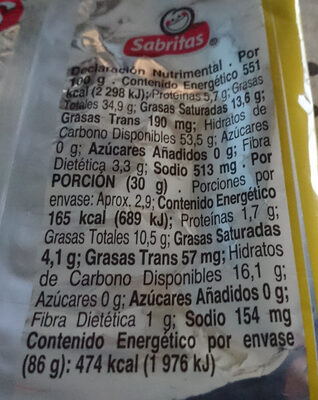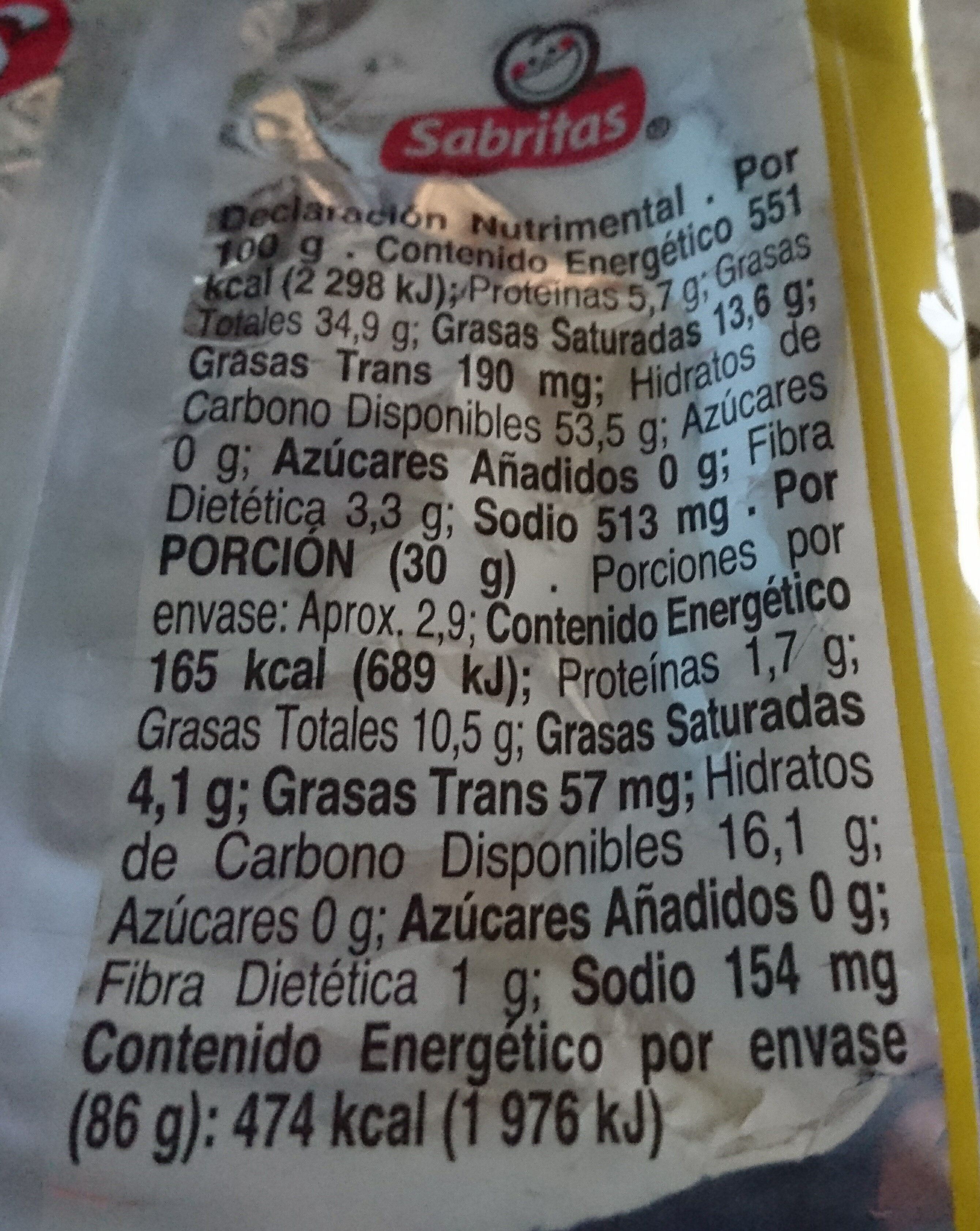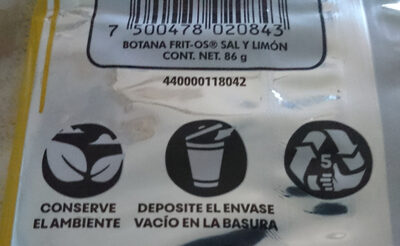Fritos Limón y Sal - Sabritas - 86 g
This product page is not complete. You can help to complete it by editing it and adding more data from the photos we have, or by taking more photos using the app for Android or iPhone/iPad. Thank you!
×
Barcode: 7500478020843 (EAN / EAN-13)
Quantity: 86 g
Packaging: es:Bolsa plástica
Brands: Sabritas
Categories: Snacks, Salty snacks, Appetizers, Chips and fries, Crisps
Labels, certifications, awards:
Sistema de Etiquetado Frontal de Alimentos y Bebidas, Exceso Calorías, es:Fritos, es:Sabritas
Countries where sold: Mexico
Matching with your preferences
Report a problem
Data sources
Product added on by openfoodfacts-contributors
Last edit of product page on by 5m4u9.
Product page also edited by off.85384952-7e10-4824-be53-1e1ef5a22c8b, packbot, tania-guzman.
If the data is incomplete or incorrect, you can complete or correct it by editing this page.













